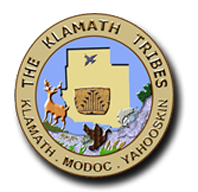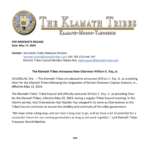Today we will examine some patterns in numbers, what a number looks like when it is used and some “daily” uses of numbers.
For the numbers 20 and beyond we have some interesting ways the numbers are expressed. There is a suffix -ni- that is used two different ways. The first way it means: Times as in multiplication.
The number for 20 is: tewnipni lap-ten times two.
We could also get to 20 by tonipni wonip=five times four.
Numbers in Klamath have two forms. There is the number form and the form it takes when used.
we have the number 5=tonip. When we use it, we add the suffix-ni to the number.
if I say 5 horses, it is tonipni wac. ni tonipni wac sle-a. I see five horses.
So, a number has its form-tonip. When the number is used it has another form-tonipni. Every multiple of 10 in Klamath is expressed by tewnipni ___ (whatever the number is: 20,30,40,50, …) tewnipni lap, tewnipni ndan, tewnipni wonip, tewnipni tonip, …
Change of subject
Now we are going to look at the days of the week. The first 5 days of the week are made from numbers-stating the first-fifth day of the week.
The first day of the week is the word for “first”-lobini.
Days of the week:
Monday=lobini First day of the week
Tuesday=lapniks Second day of the week
Wednesday=ndanniks Third day of the week
Thursday=wonipniks Fourth day of the week
Friday=tonipniks Fifth day of the week
Saturday=se-ets The day of the week the federals used to distribute items.
Sunday=sandi Sunday is sunday





